-
What to Do When There Is a Wasp Nest on Your Property
Wasps are a common reason why people need summertime pest control near Dublin. If youâve spotted a wasp nest on your property, then itâs best not to attempt removal on your own, but to instead contact a professional pest removal service . This step is to help ensure both your safety and that of anyone nearby. Some individuals can have a severe or even fatal reaction to wasp stings, so itâs better to be safe in these situations.
The right pest treatment for the wasps on your property will depend on your preferences and needs, as well as the type of wasp that you have. Various species create different types of nests, and they build their nests in a variety of locations. Wasps inside walls are the most difficult to eradicate, and most attempts at removal that are made by inexperienced individuals only worsen the problem. For these reasons, if you hear buzzing coming from within your walls, then consider contacting a pest control company right away.
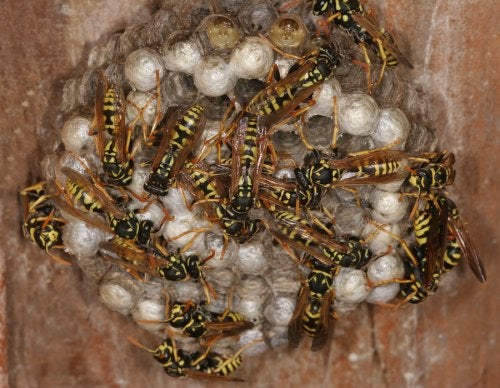
-
Exterior Risk Factors for Interior Pest Infestations
Has your home required pest treatment in the past? If so, then you may be wondering what you can do to help prevent future bug problems. One area that is often overlooked when it comes to pest control in Dublin is the area outside the home. Keep reading to learn what exterior risk factors can lead to indoor bug problems.
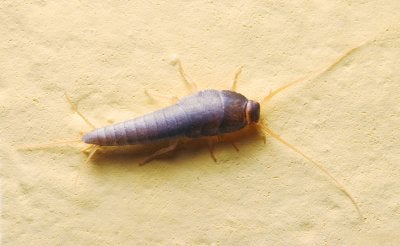
Debris
If you or someone in your family tends to lean objects against your homeâs siding or pile materials like compost, firewood, and lawn debris around your exterior walls, then you may be inviting pests into your home. First, objects propped up against your walls give bugs easier access to your home. Second, many insects view firewood, yard waste, and compost as shelter or food. After colonizing a pile of debris, the bugs may make their way into your home.
Moisture
One of the surest ways to make your home more attractive to pests is to have excess water on your property. Make sure that you have no dripping faucets and clean up any containers that may collect rain water. Also, if your yard remains soggy after a storm, then you should consider improving your propertyâs drainage system.
Garbage
If you store food waste in garbage cans in your yard, then this can serve as a food source for bugs and lead to roach and ant infestations. Ideally, trash cans should be stored in a secure shed or garage where bugs canât get to them. If this isnât an option, then inspect the bins for holes, including on the bottom, and ensure that their lids close tightly. Finally, store your trash cans as far from your home as possible and empty them regularly.
Foliage
The final factor to consider when evaluating your exterior risk factors for a bug infestation is your lawn care habits. Grass that is allowed to grow too tall, for example, provides shelter and shade for insects. Also, tree branches that make contact with your roof give bugs easy access to your home. For these reasons, consistent lawn maintenance should be a part of your pest control strategy.
-
How to Create an Effective Pest Control Strategy
Have you noticed strange noises, unpleasant odors, damaged furniture, or droppings around your home? If so, then you may have a pest problem on your hands. If you want to minimize the damage to your property and prevent the problem from growing, then itâs important to take action at the first signs of a bug infestation. Keep reading for tips on creating an effective strategy for pest control near Pleasanton .

Find out what youâre dealing with.
Properly dealing with a pest that has infiltrated your home requires that you learn what type of bug it is. For this reason, the first step to take when it comes to creating an effective pest control strategy is pest identification. There are a number of ways of doing this, such as laying traps, finding tracks, looking for dead bugs, visually recognizing the pest, and examining droppings. Because your exterminator should be able to identify the insect after an assessment, there is no need to worry if youâre unsure what type of pest you have.
Determine the right solution for your pest problem.
A worthwhile pest control strategy involves eliminating the pest from the home and taking steps to prevent recurring infestations. Once you know which pest has invaded your home, itâs time to find an insect control strategy that will be effective against it. Some examples of pest control approaches that your exterminator may suggest are laying traps, sealing off points of entry, physical removal, lawn and perimeter treatments, or a combination of these options.
Think about the needs of your family and property.
The final consideration when it comes to developing a pest control strategy is to think about your specific needs. For this reason, your exterminator will assess your situation and speak with you about your pest control options. Some of the factors that your exterminator may consider are whether you have kids or pets, if you have landscaping or a garden that you want to protect, and your concerns about safety and long-term success. Following these steps, you and your exterminator can develop an effective pest control strategy.
-
See How One Couple Dealt with Brown Widow Spiders
Spiders are an important part of the ecosystem, but infestations of these arachnids can pose a danger to people. If youâre dealing with a spider problem and wonder if you need pest control services in Pleasanton , then watch this video to learn about one familyâs experience with a brown widow infestation.
A couple in rural Florida was fighting a losing battle against brown widow spiders that had infested their yard. After several failed DIY attempts at exterminating the pests, the family gave in and contacted a professional pest control company. The pest treatment kept the spiders at bay for a few days, until the homeowners realized that the spiders were around their windows. After replacing their homeâs windows with new, tight window frames and scheduling several lawn spraying pest treatments, the brown widow spiders were finally under control.
-
Dealing with the Effects of Dutch Elm Disease
Are you looking for pest control or tree disease treatment in Dublin because the trees on your property look less than healthy? If so, one potential problem to consider is Dutch elm disease, which affects many elm species.
If your trees are affected by Dutch elm disease, you will notice that leaves wilt, turn yellow, and then become brown. When the fungus enters through the root system, the symptoms may manifest lower in the crown and spread rapidly. When the infection starts in the upper crown, then the symptoms will start at the end of a branch and spread downward.
Although this fungus can spread through connected root systems, itâs closely linked with elm bark beetles. If these beetles lay their eggs in an infected tree, the young hatch and pick up the fungal spores. After reaching adulthood, the beetles can then visit healthy trees and infect them with Dutch elm disease.
Practicing insect control and pest treatment to limit the population of insects that can transmit the fungus is one of the best ways to deal this disease. Breaking root grafts between neighboring trees and treating trees with fungicides can also help manage the effects of Dutch elm disease.

-
Busting Common Myths About Roaches
A need for cockroach extermination is one of the primary reasons why people contact a pest control company. If youâre looking for ways to prevent a cockroach infestation in Dublin, then you may benefit from understanding more about these household pests. Continue reading to learn the truth about common myths regarding roaches.
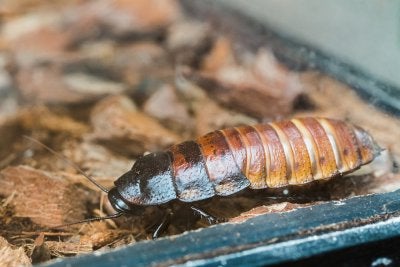
Myth #1: All roaches are pests.
You may be unpleasantly surprised to learn that there are about 4,000 different cockroach species worldwide. Some of these bugs can fly and others canât, and some of them are black or dark brown in color, while others have light brown or reddish coloring. You may be glad to learn, however, that a relatively small number of cockroach species invade buildings and homes where they can pose a danger to human health. If you have spotted cockroaches in your home, then contacting a pest control company sooner rather than later can help prevent the problem from growing.
Myth #2: Roaches are invulnerable to nuclear explosions.
Itâs true that cockroaches are extremely tough insects and that there has been research concerning their ability to withstand radiation. Whatâs been found is that roaches that are exposed to 1,000 radon units live and experience decreased reproductive ability, and about 10% survive exposure to 10,000 radon units. Comparatively, humans die after exposure to about 400 to 1,000 radon units. However, cockroaches die after about an hour of being exposed to 115ºF temperatures, so they are unlikely to survive a nuclear explosion, in which temperatures reach more than 100,000,000 ºF.
Myth #3: A cockroach can live for months without a head.
Roaches have different circulatory systems than humans. Instead of capillaries and blood vessels, they have open circulatory systems that allow the body to seal off an injured area more easily. Also, cockroaches breathe through little holes, call spiracles, that are in each segment of their bodies, and their brains do not control their breathing. While these facts suggest that cockroaches can live for a while without a head, the inability to eat food or drink water will cause the average headless cockroach to die within a few weeks.
-
Getting to Know the Spiders of California
Are you looking for insect control or pest extermination in Pleasanton because of a spider infestation? If so, and if youâd like to have a better understanding of what type of pest control you need, then continue reading to learn about some of the spiders that live in California.
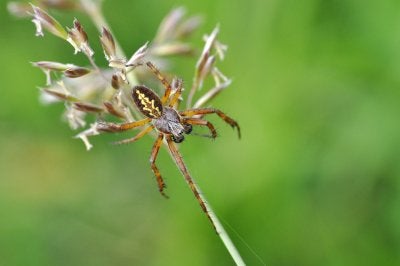
Garden Spider
The female garden spider can be easy to spot due to her significant size and distinctive black and yellow markings. The males of this species are less impressive, but also have some noticeable yellow on their bodies. These spiders build classic, round orb webs and are commonly seen in fields, forest edges, gardens, and orchards.
Carolina Wolf Spider
This species is the largest of the wolf spiders found in North America. The bodies of the females are 22 to 35 millimeters long. Males of this species may wander into homes during mating season. These spiders commonly hide in burrows during the day and hunt actively at night.
Southern House Spider
This spider is commonly seen where people live and builds its web from crevices and cracks on the exterior of barns, garages, homes, and other structures. Male southern house spiders are often mistaken for brown recluse spiders.
Gray Wall Jumper
In the United States, these spiders live almost exclusively on the exterior walls of structures. The gray wall jumper spider hides away in crevices at night and is an active hunter during the day.
Spotted Orbweaver
This is a spider species that can vary in pattern, but these insects usually have a golden orange or rusty red color. Youâre likely to see a spotted orbweaver spider living on a large web that is constructed on buildings and other manmade structures, particularly outdoor light fixtures.
Common House Spider
As its name implies, this spider species is prolific and widespread, making it a frequent reason why people consider pest control. The common house spider is associated with manmade structures, creates brown egg sacs, and can sometimes be mistaken for a brown widow spider.
-
Pest Prevention Tips for Restaurants
When it comes to commercial pest control near Pleasanton , restaurant kitchens can be more vulnerable to infestations that other locations, due to the amount of food and water thatâs present. Watch this video for tips on preventing pest contamination in the kitchen.
Cockroaches, flies, and rodents can spread germs and lead to contaminated food. For this reason, pest control must be practiced in all food-related areas to help keep customers safe. While pest extermination is essential for existing infestations, itâs best to prevent this type of problem in the first place. Also, keep in mind that pesticides should only be handled by licensed pest control applicators and when food is completely protected. To help keep your restaurantâs kitchen pest-free, repair any holes in the walls, keep trash cans covered, and clean up spills immediately.
-
Tips for Keeping Ants Out of Your Office
An ant infestation can be quite the distraction, especially if it occurs in your office . If youâd rather set your sights on your work than worry about pest control near Pleasanton, then consider using ant bait to take care of your problem. You should also make sure any food you bring into your office is sealed tightly, and call the pest treatment professionals to set you up with a plan to keep the ants out. Continue reading and pick up a few tips for keeping ants out of your office.
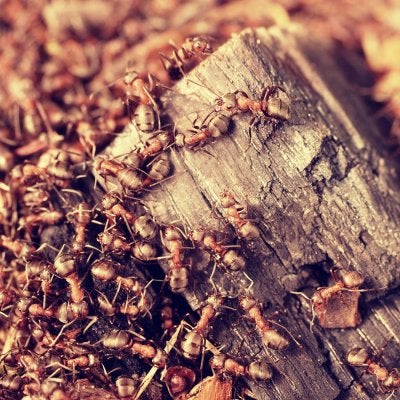
Use Ant Bait
If you want to keep ants out of the office, youâll need to deal with the commercial pest control issue at hand. Before you call your pest treatment professional, try setting out baits for the ants. This will draw them out of hiding and give you an idea of where the source of the infestation is. Nobody wants to walk into an office to discuss business and discover an ant problem, but you can use this pest control method to eliminate part of the infestation and figure out where itâs coming from. Then you can take further measures to cut it off at the source.
Keep Food Contained
Once youâve dealt with your pest control issue and youâre considering how you can make sure it doesnât come back, think about what you eat in your office. If youâre a workaholic who eats lunch at the desk, itâs important that you keep your food securely sealed. A bowl of apple slices makes for a nice, healthy snack, but it can also lead to a pest control situation. If youâre going to be snacking in your office, donât leave your dishes out in the open where pests can access them.
Call the Pros
If youâre worried about a pest control problem in your office, you can always work with the professionals. Your pest control pro will know exactly how to keep ants out of your office, and he or she can help you prepare. Call your commercial pest control expert to see what you can do for your space.
-
Facts That You May Not Know About Spiders
No matter how you feel about spiders, they are interesting creatures. Aside from being the cause of a call for residential pest control serving Dublin , spiders have some characteristics that you might not expect. Certain kinds of spiders are vegetarians, and not all the Daddy Long Legs you come across are even spiders. They can also jump significant heights. Before you call for pest removal services, keep reading to learn about some facts that you may not know about spiders.
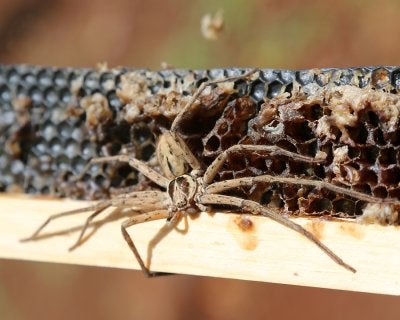
Some Are Vegetarians
To those who have dealt with pest control issues in the past, a spider might just be a spider. There are actually many species, however, and they have different characteristics. In fact, one of these species is vegetarian. Bagheera kiplingi is a species of spider that mainly eats vegetables, which means you donât have much of a reason to be scared of them. This type of spider is indigenous to Central America, and they like trees that have plenty of protein in their leaves. While Bagheera kiplingi spiders are mainly vegetarians, they become carnivorous when the dry season comes around.
Not All Daddy Long Legs Are Spiders
You should handle a pest control problem no matter what kind of pest infestation youâre dealing with, but what you call a Daddy Long Legs might not even be a spider. In addition to actual spiders, the term Daddy Long Legs has described harvestmen and crane flies. The only actual spiders that fall under the Daddy Long Legs category are cellar spiders, although harvestmen are in the arachnid family. Even though your pest control professional can offer you just about any pest treatment you need, sometimes it helps to understand what youâre dealing with.
Spiders Jump
If you werenât scared of spiders before, you might be when you learn that some kinds can jump about 50 times their own length. This information might make you more likely to call for pest control sooner rather than later, but you donât need to worry too much. Spiders typically only do this while theyâre hunting or escaping a predator in the wild.
RECENT POSTS
categories
- Uncategorized
- Weed Control
- Lawn Treatment
- Pest Control
- Performance Pest Management
- infographic
- Spider treatment
- Pest Management
- Commercial Pest Exterminator
- Residential Pest Exterminator
- Mice
- Tree Diseases
- tree disease treatment
- cockroaches
- Flea
- Fleas
- Ants
- Ant Infestation
- Bed Bugs
- Wasps
- Bees
- Stinging Insects
- Household Spiders
- Insects
- Tractor Mowing
- Earwigs
- Northern California
- Commercial Property
- Sow bugs
- Infestation
- Bugs Live
- DIY Pest Control
- Spider Silk
